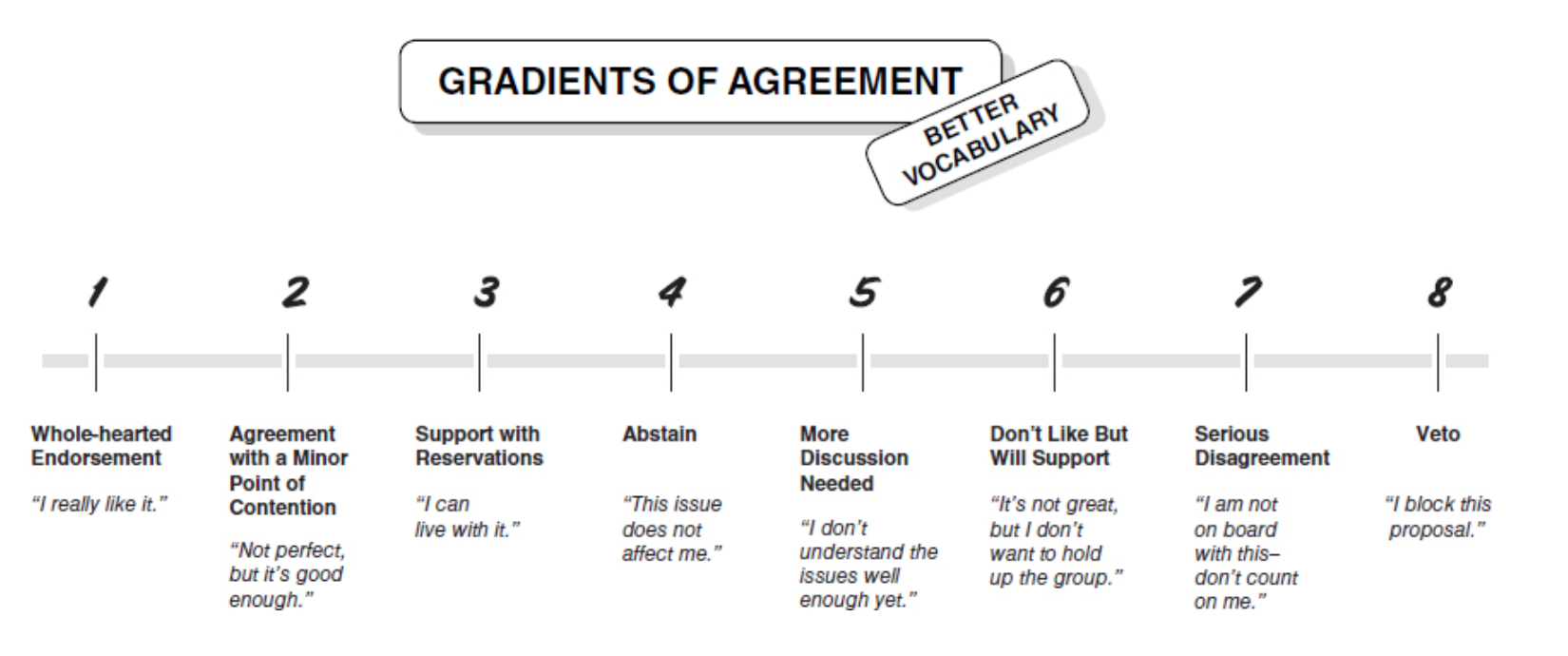I’ve recently had the privilege of leading a development team where we had a mix of personalities and mindsets. It was incredibly useful to have this mix—different people in the team saw things from totally different angles which I believe led to us making better decisions as a team (provided everyone’s voice was heard).
As the “official” leader, one of the things I wanted to get right early on was taking the team on a journey when making critical team decisions. For me critical team decision were any decisions that had a direct impact on how the team worked. Generally I wanted agreement from the whole team with these types of decisions before proceeding.
For instance, when making a hiring decision I wanted the whole team to be involved in making the call of offering a postion to a candidate. A phrase I would often say is “If we don’t all agree on bringing this person into the team then we are not going to offer them the position”.
The challenge with setting this mindset was I soon discovered that different people in the team had different appetites for risk. While it was easy for certain team members who had high appetites of risk to give the green light, it was quite challenging to get other team members who had lower appetites for risk to give a “yes”.
With these “skeptics” it seemed there was almost always some reservations around how the new person would work out and while we tried to resolve their reservations upfront some of the concerns were impossible to validate until you had hired the person and they were in the team as a team member.
This left me with a dilemma, I wanted everyone in the team to feel heard and involved in the process but skeptics were not giving their yes because they had concerns, some of which we simply could not resolve. At the time I solved this by saying “if your answer is a maybe, then it is a yes.”, while this worked, it didn’t feel great.
Looking back at how we were handling the approval process I believe I was treating it all wrong. I was seeing the “do you want to bring this person into the team” as a “yes/no” answer when in actual fact it wasn’t as clean cut as that.
Post being in the team I’ve come across a book called the “Facilitator’s Guide to Participatory Decision Making” which has introduced me to several powerful tools for participatory decision making. One of these tools I believe would have solved my dilemma of getting a yes/no from my team on these critical team decisions—it’s called the “Gradient’s of Agreement” chart.

The way it works is each person in the team nominates their level of agreement to the decision and then that is mapped out. For instance, when bringing a new person into the team one person may rate a 3 (Support with Reservations) while another may rate a 6 (Don’t like but will support). Both of those are a “yes” with varying levels of agreement. Since seeing the gradients of agreement table I’ve used it a few times and the results have been great.
Next time you ask your team for a yes/no for a critical decision try it!
To see Sam Kaner, author of the “Facilitator’s Guide to Participatory Decision Making” explain the concept watch this snippet or if you have more time on your hands watch the full talk from my notes on the talk post.

